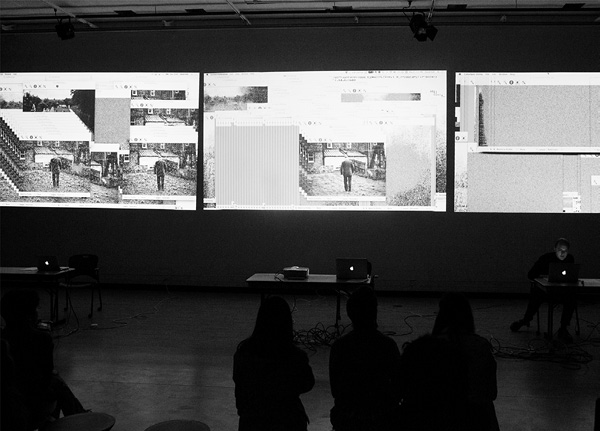
A BRIEF HISTORY OF LOSS
first performed on July 5, 2016
The School of the Art Institute of Chicago, Chicago, IL
performed twice in 2016
DAVID HALL
Chicago, IL
423389796t423389796o423389796d423389796a423389796v423389796i423389796d423389796j423389796a423389796m423389796e423389796s423389796h423389796a423389796l423389796l423389796@423389796g423389796m423389796a423389796i423389796l423389796.423389796c423389796o423389796m
A BRIEF HISTORY OF LOSS
DAVID HALL
“A Brief History of Loss” was a heavily mediated performance lecture exploiting slippages in memory. Drawing on various media and literary histories, this performance sought to complicate and expose the ways in which writing and media practices contradict, elucidate, negate, and perform one another. These formal engagements also lend themselves to collapsing the assumed aesthetic and ethical differences between words and images. That is to say, media and writing practices delineate certain competences of content management, archival strategies, and forms of cultural production, which ultimately implicate how, in a digital landscape, writing becomes a form of reading and reading becomes a form of writing. What I found myself concerned with in this particular performance was the way in which this investigation becomes allegorical for challenging notions of digital archiving and memory: not only memory and history as a form of mediation, but the ways in which memory and history are also mediated.
The form of this performance utilized compression as a crude metaphor for memory loss, in which I actively and manually compressed digital photographs in real time. As the performance conflated forgetting and recalling, writing and reading, and words and images, I was actively inscribing critical language around photography, memory, and language into the photographs.
In conjunction with manually compressing digital photographs, I also exploited the constraints of ‘lousy’ file formats, specifically the .jpg. I revealed compression artifacts by generationally saving thousands of digital photographs until what remained was ‘noise.’ Along with compressing the images, there was prerecorded sound, which attempted to place the photographs in relationships that might begin to define a genealogical history. The audio was gradually compressed until there was no explicit, legible, or semantic sound to be gleaned.
This highly mediated performance was also supplemented by narration through live inscription and text-to-speech, which not only addressed the faculties and competences of the artificiality of an absolutely faithful realism, but also sought to expose the ways in which mediation, and its interfaces, begins to establish predetermined forms and formats of making and thinking.